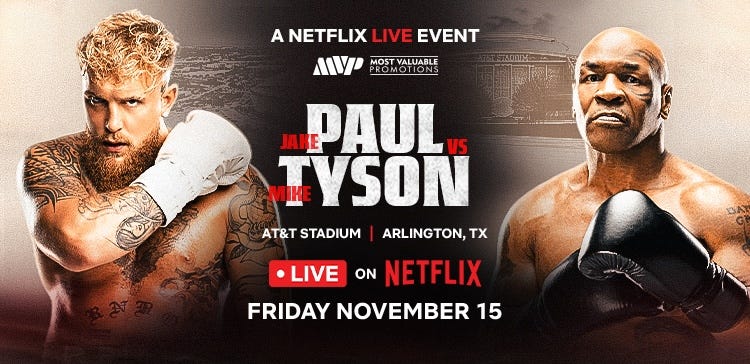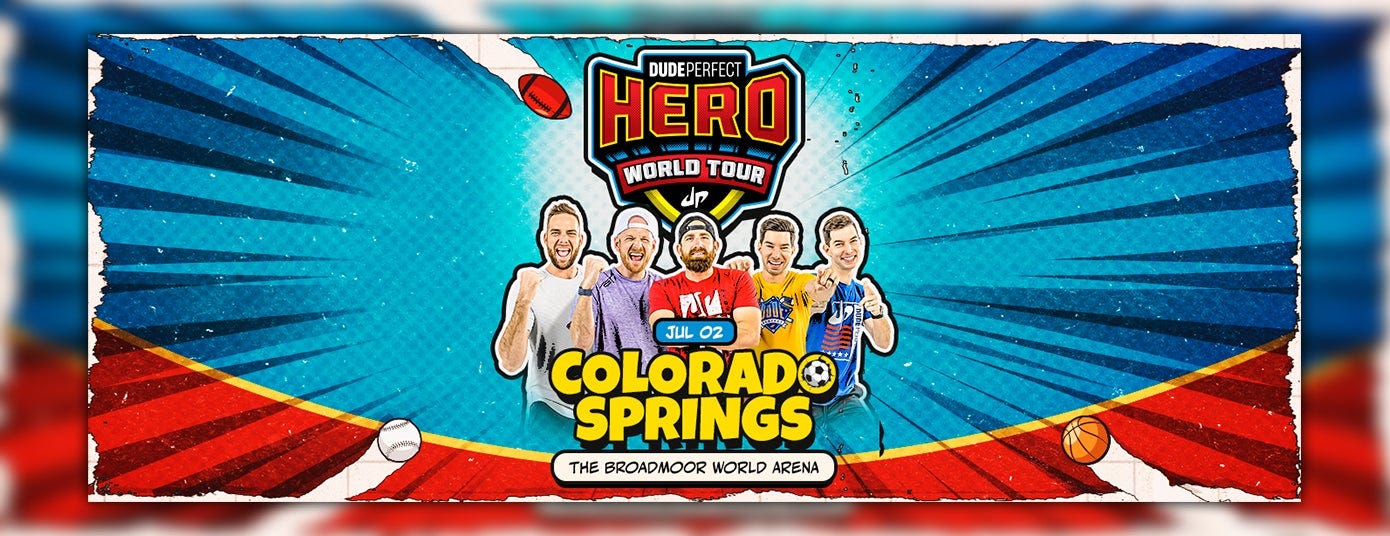YouTubers are Disrupting Sports Content
Creators are redefining who is a sports star and what sports content looks like
Who do you think was the biggest sports star of the summer?
Perhaps Simone Biles at the Olympics, or Lionel Messi at the Copa America.
Or maybe it was Donald Trump on the golf course.
In July, Trump played a round with pro golfer and newly-minted YouTube star Bryson Dechambeau. The video “Can I Break 50 With President Donald Trump?” rocketed to #1 trending on YouTube. It now has 13 million views. For perspective, that’s nearly four times viewership from the final round of The Open Championship this summer.
We believe this video is emblematic of a trend that every sports executive, investor and entrepreneur should understand: YouTubers are disrupting sports content.
The modern pro sports business has historically hinged on one revenue source: TV deals. The NFL and NBA respectively drive 67% and 54% of revenue from selling rights to broadcast live games.
But YouTube’s disrupting the value of live games in two major ways.
Disruption #1 is well-understood by sports executives: Sports fans are increasingly watching highlights on YouTube instead of watching live games on ESPN.
For now, TV deals continue to skyrocket in value, as live sports prop up linear cable. (See the NFL & NBA’s $111B & $76B deals). So the leagues tend to simply post top plays and game recaps on their YouTube channels, and even allow other third-parties like House of Highlights and Overtime to do the same. YouTube executives would argue that highlight content helps grow the pie for live games. And league executives are buying that argument. They essentially view YouTube as marketing for their live games, while receiving a marginal cut of YouTube ad revenue.
However, league executives are wary of the longer-term existential threat. If fans continue to shift away from live games and towards highlights, the value of core media rights will eventually reflect that shift.
Disruption #2 (the topic of this article) is less understood by sports executives: Sports fans are increasingly watching new types of sports content that look nothing like live games or highlights.
Fans – specifically young fans – are watching trick shots with Dude Perfect, basketball obstacle courses with Jesser, and soccer skills challenges with IShowSpeed.
And when they do tune into live games, many young fans are watching their favorite creators, whether it’s Jake Paul in a boxing match or Sergio Aguero in a Kings League soccer match. Fans are not just following the world’s best athletes.
Sports executives struggle to understand Disruption #2 because they don’t watch this content. But this trend reflects an underlying truth about sports: It’s all about storytelling.
The NFL, NBA and other leagues do a great job of storytelling. They pit the world’s best athletes against each other, and that breeds storylines like: the epic comeback, the bitter rivalry, or the GOAT debate. But YouTube creators and creator-first sports properties are tapping into new types of sports storytelling – and winning over young sports fans in droves.
This article explains the three most important ways YouTubers are revolutionizing sports content.

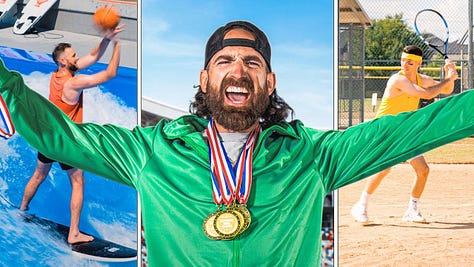
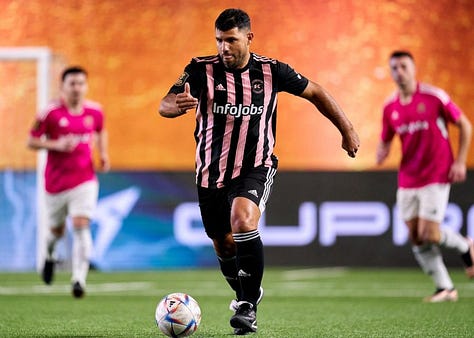
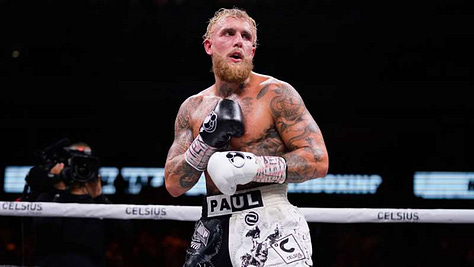

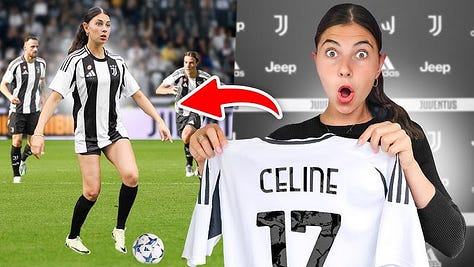
Trend #1: YouTubers are redefining who is a sports star, and what sports content looks like
Check out a sampling of YouTube’s most-subscribed sports creators:
Deestroying (6 million subs) is a 27-year-old ex-D1 football player who shows up to high schools and records one-on-one football drills that drive fans crazy.
Jesser (21 million subs) is a lovable 25-year-old dude who lives the NBA fan’s dream, getting behind-the-scenes game access and hosting gamified basketball challenges.
IShowSpeed (33 million subs) is an eccentric 19-year-old streamer, who records meet-and-greets and skills challenges with the world’s most famous soccer players.
There are two takeaways here.
Takeaway #1 is: None of these sports creators are elite athletes. But they’ve built household names on par with the world’s best athletes. Check out the Google Trends popularity of IShowSpeed (a very mediocre soccer player who livestreamed the 2024 Ballon D’Or ceremony) vs Rodri (a Spanish soccer player who won the 2024 Ballon d’Or).
Takeaway #2 is: These creators are producing new types of sports content that have nothing to do with elite competition. One of Jesser’s top videos “Going to 5 NBA Games in 50 hours” follows the creator as he explores different stadiums, eats hot dogs and meets mascots. The video totaled 15 million views. The 2023 NBA Finals averaged 11.3 million viewers.
That viewership comparison isn’t apples-to-apples. But it’s enough to show that YouTubers are creating new genres of sports content that masses of sports fans love.
Many pro athletes have tried to mirror these creators by producing their own off-field content. For example:
Bryson Dechambeau (1.6M subs) teams up with celebrities like Donald Trump and Tony Romo to see if they can Break 50 from the forward tees. Dechambeau’s YouTube turned him into one of the most popular pro golfers in the world.
Travis & Jason Kelce (2.46M subs) post clips from their podcast New Heights, where they share personal stories and hilarious takes on NFL current events.
Cristiano Ronaldo (65M subs) posts interviews with his wife Georgina that shed light on his personal life.
However, it’s worth noting that besides Cristiano Ronaldo, who launched the fastest-ever growing YouTube channel in August, the most-subscribed sports creators include very few professional athletes.
Trend #2: New sports leagues are emerging around these YouTube creators
As new sports creators emerge, we’re also seeing new sports properties form around them.
Jake Paul was the trailblazer. He gained 21 million YouTube subscribers by making vlogs, prank videos and music videos. Then in 2018, Jake and his brother Logan started beefing with another pair of YouTube brothers, Deji Olatunji and KSI. This set up a double-feature fight, live streamed on YouTube, where it sold 1.3 million pay-per-views. A game changing feat that raised eyebrows across the sports world.
Jake Paul was a guru at building the social media hype machine, and turns out he was pretty good at boxing too. Since 2020, Paul has fought ten sanctioned fights and driven major ticket, media and sponsorship revenue with each. His next fight could be his largest yet. On November 15, Paul will fight Mike Tyson in front of AT&T Stadium’s 80,000 spectators and Netflix’s 280 million subscribers.
Back in 2022, Tyson went so far as to say that Paul and YouTube saved his sport. He said, “Boxing was pretty much a dying sport, so UFC was kicking our butt, and now we have these YouTube boxers. Boxing is getting 25 million views. Boxing is going back thanks to the YouTube boxers.”
Also in 2022, Gerard Piqué, the former FC Barcelona star, launched his own creator-led sports property: The Kings League. But instead of building the soccer league around his personal brand, Piqué built it around multiple creators’ brands.
The Kings League’s 32 teams are owned by celebrities, who often livestream and commentate their team’s games. Team owners include Spain’s most-viewed streamer Ibai Llanos (12M subs) and Argentinian soccer star turned streamer Sergio Aguero (4.4M subs).
The league essentially borrowed these creators’ audiences to build its own fanbase, and quickly established itself as a top-tier media property. The Kings League signed sponsorship deals with global brands such as Adidas and Infojobs, and their inaugural season’s final event at FC Barcelona’s Camp Nou drove $5 million in ticket sales. With investors taking notice, the league recently secured an additional £60 million in growth funding.
Even incumbent sports leagues are leaning into creator-led properties. In August, The PGA Tour debuted The Creator Classic, a nine-hole tournament with 16 online creators. The event drove 2 million views and peaked at #2 trending on YouTube. With the roadmap changing, the NBA and MLB should be actively thinking about how to improve the celebrity basketball and softball games, which have become deadweights of their All-Star Weekend broadcasts.
Creator-led sports properties have a few built-in advantages over legacy sports leagues:
They’re cost-efficient: Unlike the Big 4 leagues, creator-led leagues don’t need to spend to recruit the best athletes. Creator-led properties can divert spend to recruiting several top-tier creators (e.g. MVP & Jake Paul), or recruiting semi-pro athletes that provide content for top-tier creators to livestream (e.g. Kings League & Ibai Llanos).
They’re youth-first: Every Big 4 league is looking to reach younger audiences and future-proof their business. For creator-led properties, the young audience is a given.
They’re fast-growing: Creators can mobilize massive, loyal audiences. That helps get the revenue flywheel going immediately – a necessary condition for new leagues as we discussed in “The Rise of the Venture-Backed Sports League.”
Creators are increasingly motivated to capitalize on these advantages, and we’re seeing more of these properties come to market for funding.
Trend #3: New business models are emerging from YouTube sports content
New creators and creator-led properties are also enabling new business models for sports.
As mentioned earlier, the Big 4 leagues drive revenue primarily by selling media rights, and secondarily by selling sponsorships, tickets and merchandise.
YouTube flips that model on its head by giving away the media for free, as a loss-leader to spur other revenue streams. Here are a few examples of creators tapping into different revenue streams:
Sponsorship: In Brazil, a popular streamer named Casimiro partnered with the sports commercial agency LiveMode to launch CazéTV (17M subs). CazéTV livestreams games on YouTube, Twitch and other free channels; uses creators to commentate the games; and monetizes via in-video sponsorships and YouTube ad revenues. They share a cut of these revenues with the rightsholder. CazéTV’s become the most disruptive player in Brazilian sports media. The platform has now partnered with, and streamed, the Paris Olympics, the NFL Sao Paulo Game, and the Qatar World Cup.
In 2021, the NBA leveraged this same sponsorship-based model in Brazil, partnering with the country’s top streamer Gaules to stream a series of NBA games. They streamed the games for free and monetized via a presenting sponsorship by Budweiser. Why is this innovation coming from Brazil? The market has a large sports fanbase, wide digital penetration, and weak cable players. But other markets like India fit these conditions, and we expect this sponsorship-first model to be replicated outside Brazil.
Consumer Products: MrBeast (324M subs) has by far the largest channel on YouTube. He doesn’t make sports content. But it’s worth noting that he’s strategically leveraged his audience to sell consumer products. He’s now launched MrBeast Burgers (since discontinued), Lunchly (boxed snack kits), and Feastables (chocolate bars). MrBeast has also co-marketed Prime, an energy drink launched by YouTubers Logan Paul and KSI that drove $250 million in sales in its first year. The OG of this playbook is Red Bull, which has produced years of action sports content in order to market its energy drink.
Sports YouTubers have similarly pursued this massive consumer products category. Good Good Golf (1.7M subs) built their audience with lighthearted golf videos. They’ve monetized by launching a line of performance golf gear. Céline Dept (38M subs) built her audience with soccer skills challenges. She’s monetized by launching a line of branded merch. In a sports industry where fans are accustomed to buying jerseys and other gear, we expect more sports creators to lean into the consumer products category.
Events: Dude Perfect (61M subs) built an audience of 8- to 16-year-old boys by posting trick shot videos. They’re now doing a World Tour across 25+ cities. Fans can either buy tickets, or one of three VIP packages including meet-and-greets and back-of-house tours. Sidemen (22M subs) built their audience with a range of fun Mr Beast-esque challenges. They’ve now hosted multiple charity football matches. Their 2023 match brought 60,000 fans to London Stadium and raised £2.4 million for charity.
Check out how MrBeast attracted 10,000 fans to a mall in New Jersey to announce MrBeast Burgers back in 2022. Many fans feel a personal connection with their favorite YouTubers and want to see them in person. This makes a live events revenue stream just as viable for creators as it is for incumbent sports leagues.
The best consumer businesses can essentially toggle between different revenue streams: events, merchandise, sponsorship, media, and more. Why? Great brands build loyalty from their fanbases. And whether they’re asked to buy a t-shirt, attend a live event, or tune into content, the strongest fanbases will deliver. In 2024, no one is better at building these loyal fanbases than YouTube creators.
##
To summarize, we see three major trends at the intersection of YouTube and sports:
YouTubers are redefining who is a sports star, and what sports content looks like
New sports leagues are emerging around these YouTube creators
New business models are emerging from YouTube sports content
At Will Ventures, we’re actively looking to invest in creator-led sports properties. We’re also interested in helping creators partner with companies in our portfolio.
If you are building a creator-led sports businesses, please reach out. We’d love to hear your thoughts.







